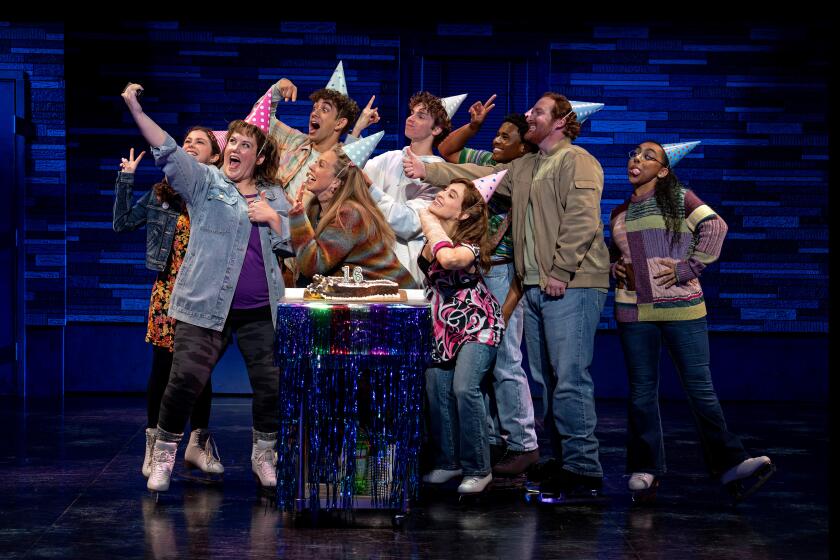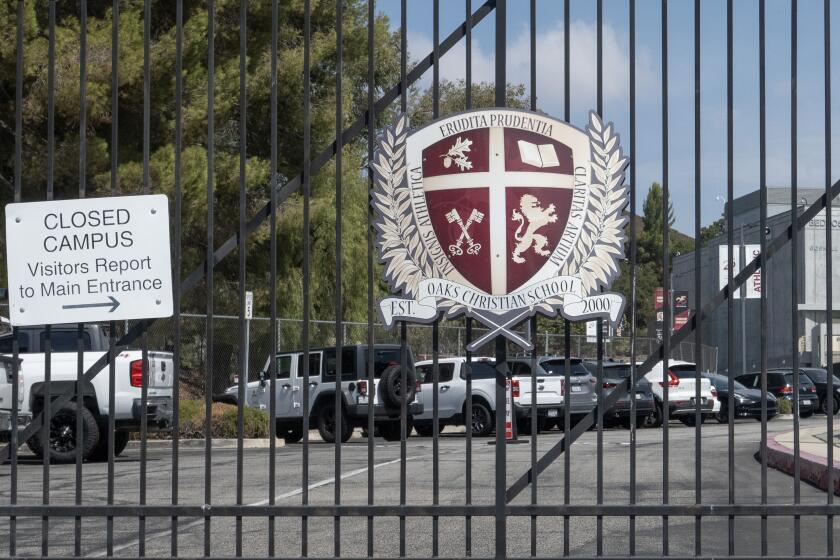Don’t Let Arsonist Gut Plan for Pan
Smoldering in the ashes of the arson’s fire that destroyed the Pan Pacific Auditorium is the controversy over how the landmark should be restored.
Preservationists and others concerned with mending the torn and charred city fabric want the restoration plan that was approved before the Pan burned to move forward, posthaste.
The plan, which took years to wend its way through the county bureaucracy, calls for the rebuilding of the Pan as an entertainment and community complex, including a multiplex cinema, a gymnasium, an ice rink and a senior services center. Funds from private uses would pay for the restoration of the distinctive Streamline Moderne-styled structure and the public facilities as well as policing the area.
Vocal neighborhood groups also say they want the Pan restored, but simply as an entry of sorts to an expanded park, a modest museum of Pan memorabilia and senior service facilities. They are more vague how it would be funded, presumably by the county or state.
Because these are the same residents who in the past have fought a variety of renovation plans for the Pan on the ground that they would generate traffic and crime, one has to view their proposal with a certain amount of skepticism.
The residents know that their proposal, if embraced by fickle representatives, would no doubt require a new bureaucratic paper chase, especially if public funds are needed. The result would be more delays that could end up burying in frustration forever any plans to restore the Pan.
Viewing the situation realistically, the best bet to save the Pan is to support the already approved concept calling for a mix of commercial and community uses. However, considering that the Pan now must be rebuilt from scratch, perhaps the mix can be modified and sited differently, to better handle traffic and serve the community.
But not to rebuild the Pan so it can pay for itself as now proposed would be a mistake. We cannot let an arsonist, or governmental inertia, decide the fate of our landmarks. The Pan Pacific belongs to the entire city, not just to local residents or befuddled politicians.
That the Pan is now being held a hostage of sorts to traffic is somewhat ironic, given the fact that its distinctive design, fashioned in the 1930s, was a celebration in part of speed and the awakening automobile age. Whether the Pan is restored or not, traffic will continue to overload neighboring streets.
The continuing controversy has not been helped by the waxing and waning of county Supervisor Ed Edelman, in whose jurisdiction the Pan lies. The supervisor originally had been for the project, but now is apparently undecided. It was just this type of procrastination that over the last 10 years has made the Pan so vulnerable to arson, and political and parochial whims.
Procrastination also mars the plan to save and restore the McKinley Mansion by moving it out of harm’s way from the southeast corner of Lafayette Park Place and 3rd Street to the Monteria Estates development in Chatsworth.
After its demolition was dramatically halted over New Year’s weekend, the Italian Renaissance-styled mansion was wrapped in red tape by concerned preservationists and embarrassed city officials. However, the knots were tied so tight that they are at present frustrating a sincere and reasonable effort to save it.
One knot in particular is the approval by the city’s building and safety department of a permit to move the mansion, according to a spokesperson for the owners, Sherry and Rod Daniels. Meanwhile, the mansion continues to decay, inviting vandalism.
Moving forward at last is Grand Hope Park, about two years after the city’s Community Redevelopment Agency held a gala, self-congratulating ground breaking at the downtown site. The logo of the event on the T-shirts that were given out at the event has long since faded.
Unfortunately, the plans by landscape architect Lawrence Halprin did not fade.
Though the concept of a park is warmly welcomed here as the centerpiece of the struggling South Park redevelopment project (the area desperately needs some open space) I would have preferred a little more green and a little less clutter; more trees, plants and flowers and fewer pergolas and furniture.
Moving backward in a sense has been Pasadena’s Board of Directors, that city’s governing body; back to the bad old days when the board viewed the city as a closely held corporation and citizen participation as a rubber stamp on a tight chain.
Apparently smarting over the continuing public questioning of some of its development policies, the board, led by Mayor William Thomson, declined recently to reappoint design commission chairman Bill Ellinger and vice chairman Mike Salazar.
Usually, reappointments to the nonpaid posts are pro forma, especially when those involved have been as conscientious and qualified as architects Ellinger and Salazar.
But it appears the two have been too conscientious in their reviews of some of the city’s pet projects, in particular One Colorado, formerly known as the Pasadena Marketplace. Some feel the project compromises the city’s own design guidelines for the historic district in which it is located.
And then there is the fact that Salazar was the co-chair of PRIDE, (Pasadena Residents in Defense of Our Environment), a slow-growth group whose initiative calling for stricter planning and development controls won out over an ill-considered measure proposed by the city and the knee-jerk opposition of the local Chamber of Commerce.
While the city’s staff has come around to the realization that the initiative is law and has to be implemented, a few of the board members continue to pout. No one ever said growing up in a democracy was easy.
More to Read
Sign up for Essential California
The most important California stories and recommendations in your inbox every morning.
You may occasionally receive promotional content from the Los Angeles Times.










